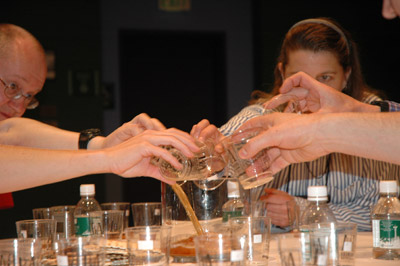Sometimes, actually many times, Lew Bryson should call his monthly post The Rant rather than The Buzz. In a piece titled Just Like Wine he tackles the bias food writers/editors’ have toward wine over beer and newspapers’ general “gee whiz” attitude toward beer.
This latter atttidue served breweries well enough a decade ago, when a new brewery was opening somewhere in the United States every few days. “Clark, go down and write a story about the new brewery in town. It’s a national trend. Take Jimmy along for a few photos.” Everybody got full blown feature, but many never saw another.
I’ve read plenty of these stories framed on the walls at brewpubs and brewery tasting rooms. They tend to be formulatic, based on information the reporter could acquire in a short time, a little bit about the brewing process, reciting the figures about how many breweries there once were in America, trying to capture a little of the romance of having a local brewery, etc.
There wasn’t time for the reporter to learn much about the intriguing subject of beer. Newspapers reserve “beats” – the stuff they cover regularly like the local school board, police, city hall, the college athletic teams – for topics of vital community interest.
When a newspaper does offer regular coverage of beer it’s usually because of a passionate reporter on another beat putting in much of his or her own time. For example, Travis Poling in San Antonio.
But to return to where Lew started, with a story in the Philadelphia Inqurier. Large newspapers, and certainly magazines, have the resources to permit reporters to “do the job right.” It’s a win-win situation for newspapers. The simple word beer makes people smile and want to read on, and there are thousands more interesting things to right about in America than there were 10 years ago.
Lew concludes:
Open challenge to Inquirer food editor Maureen Fitzgerald: run a beer piece that’s as in-depth and detailed as you would expect a wine piece to be. Give it your best shot. The New York Times’s Eric Asimov is doing it already, and Philly is twice the beer city NYC is. This is the biggest market for Belgian beers in the country, Victory and Dogfish Head are two of the hottest breweries in the country, and what do we hear about it in the Inquirer? We don’t hear diddley. Step up.
You might ask the same of your local newspaper.
